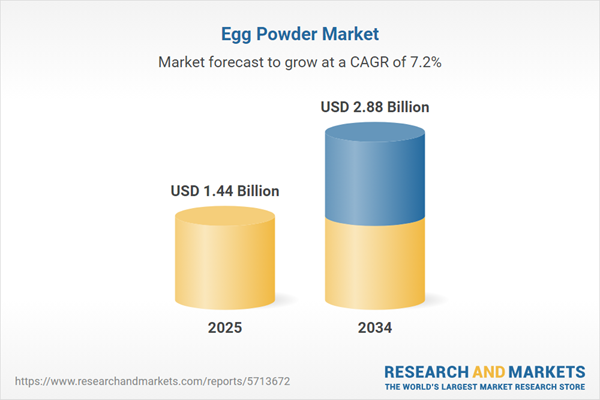One of the significant market drivers is its long shelf life and portability. Once kept in an airtight container, egg powder has a shelf-life of 5 to 10 years and is non-perishable. Unlike real eggs that have high chances of cracking, it can be easily transported and does not require refrigeration.
Powdered eggs are eggs that are completely dehydrated. These are made in the same way as powdered milk, using spray drying. The main advantage of powdered eggs over fresh eggs is the decreased weight per volume of whole egg equivalent and the longer shelf life.
The egg powder market can be broadly categorised based on its types, end-uses, and regions.
Market Segmentation
Powdered eggs are eggs that are completely dehydrated. These are made in the same way as powdered milk is made using spray drying. The main advantages of powdered eggs over fresh eggs are the decreased weight per volume of the same whole egg and the longer shelf life. The egg powder market can be broadly categorised based on its types, end-uses, and regions.Based on types, the market can be divided into:
- Whole Egg Powder
- Egg Yolk Powder
- Egg White Powder
It finds its end-uses in the following segments:
- Bakery
- Sauces, Dressings, and Mixes
- Others (Desserts, Dietary Supplements, Pharma, etc.)
Based on region, the market can be divided into:
- North America
- Europe
- Asia-Pacific
- Latin America
- Middle East and Africa
Market Analysis
The demand for egg powder has significantly increased due to the growing need for storable or packaged food. They eliminate the risk of spoilage and when stored in a cool and dry environment, can last for a long stretch of time. Egg powders are also easy to mix with other ingredients.Different varieties of egg powder are available in the market to meet the needs of diverse tastes and diets. Food manufacturers or restaurants prefer powdered eggs over fresh ones primarily due to their lower cost. Additionally, egg powders are a saviour in situations or places where availability of fresh eggs is either impossible or difficult.
Competitive Landscape
The report presents a detailed analysis of the following key players in the global egg powder market, looking into their competitive landscape:- Sanovo Technology Group
- Eurovo Srl
- Kewpie Corporation
- TM Ovostar
- Pulviver
- Others
Table of Contents
Companies Mentioned
The key companies featured in this Egg Powder market report include:- Sanovo Technology Group
- Eurovo Srl
- Kewpie Corporation
- TM Ovostar
- Pulviver
Table Information
| Report Attribute | Details |
|---|---|
| No. of Pages | 151 |
| Published | August 2025 |
| Forecast Period | 2025 - 2034 |
| Estimated Market Value ( USD | $ 1.44 Billion |
| Forecasted Market Value ( USD | $ 2.88 Billion |
| Compound Annual Growth Rate | 7.2% |
| Regions Covered | Global |
| No. of Companies Mentioned | 6 |









